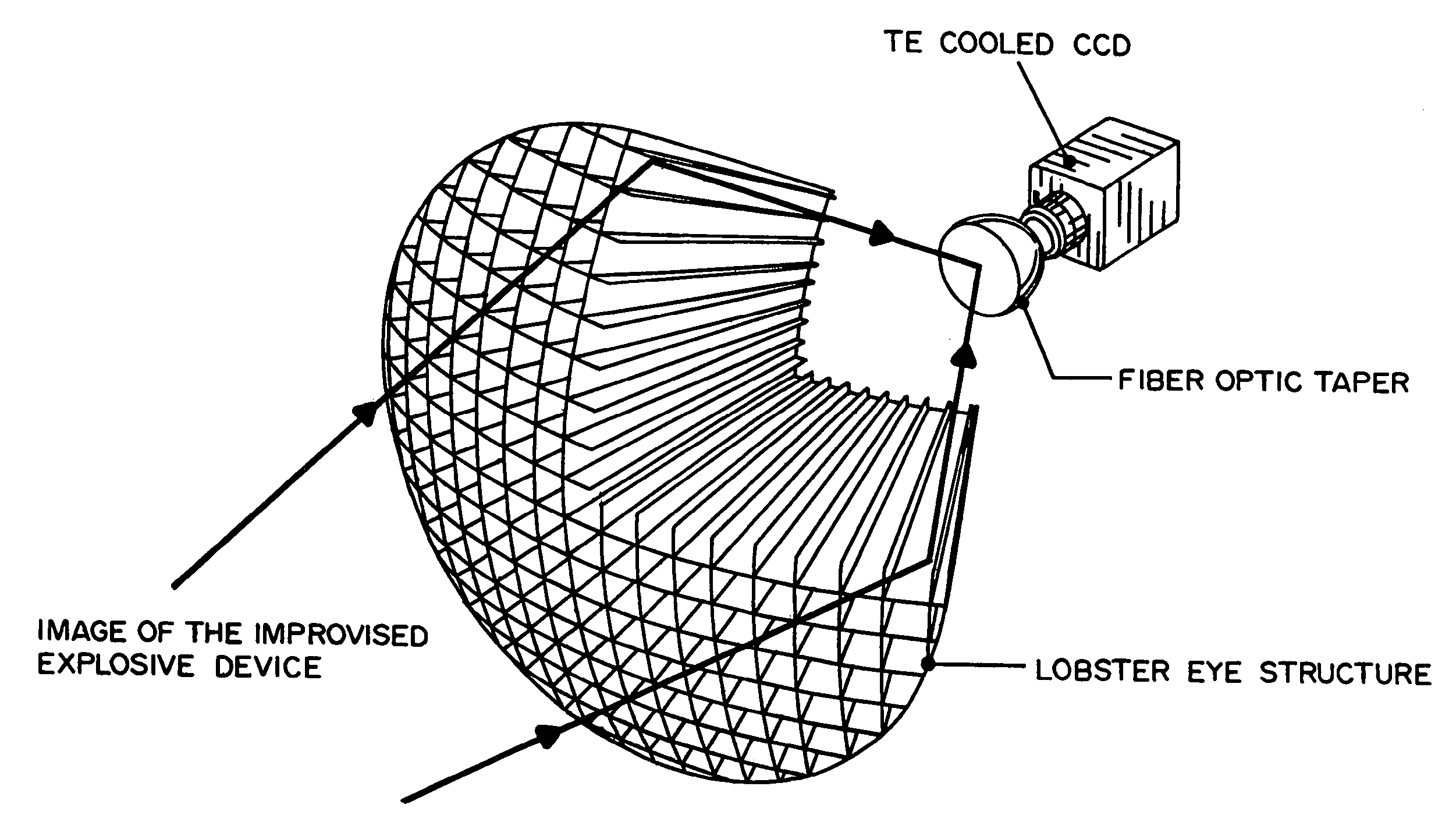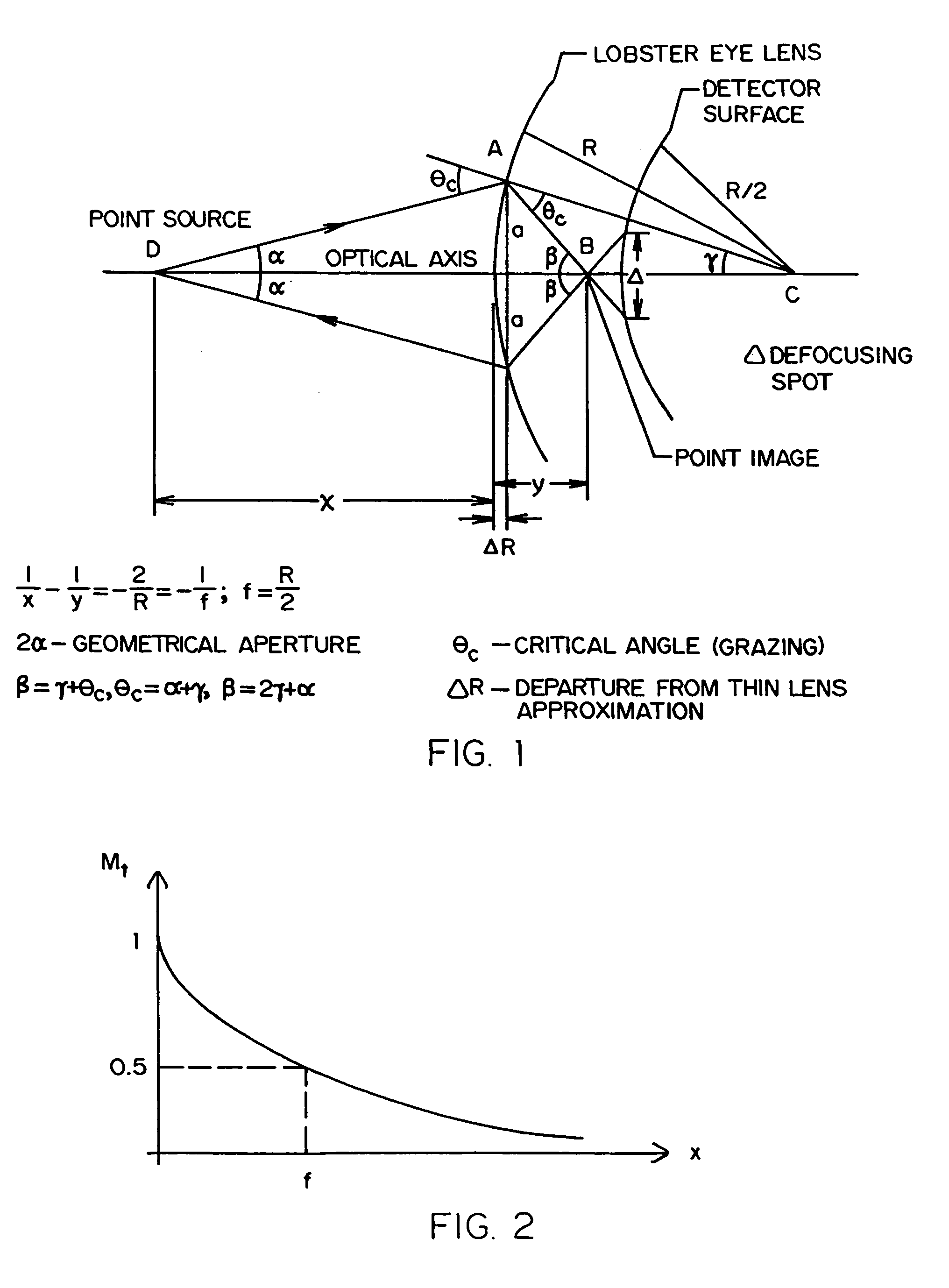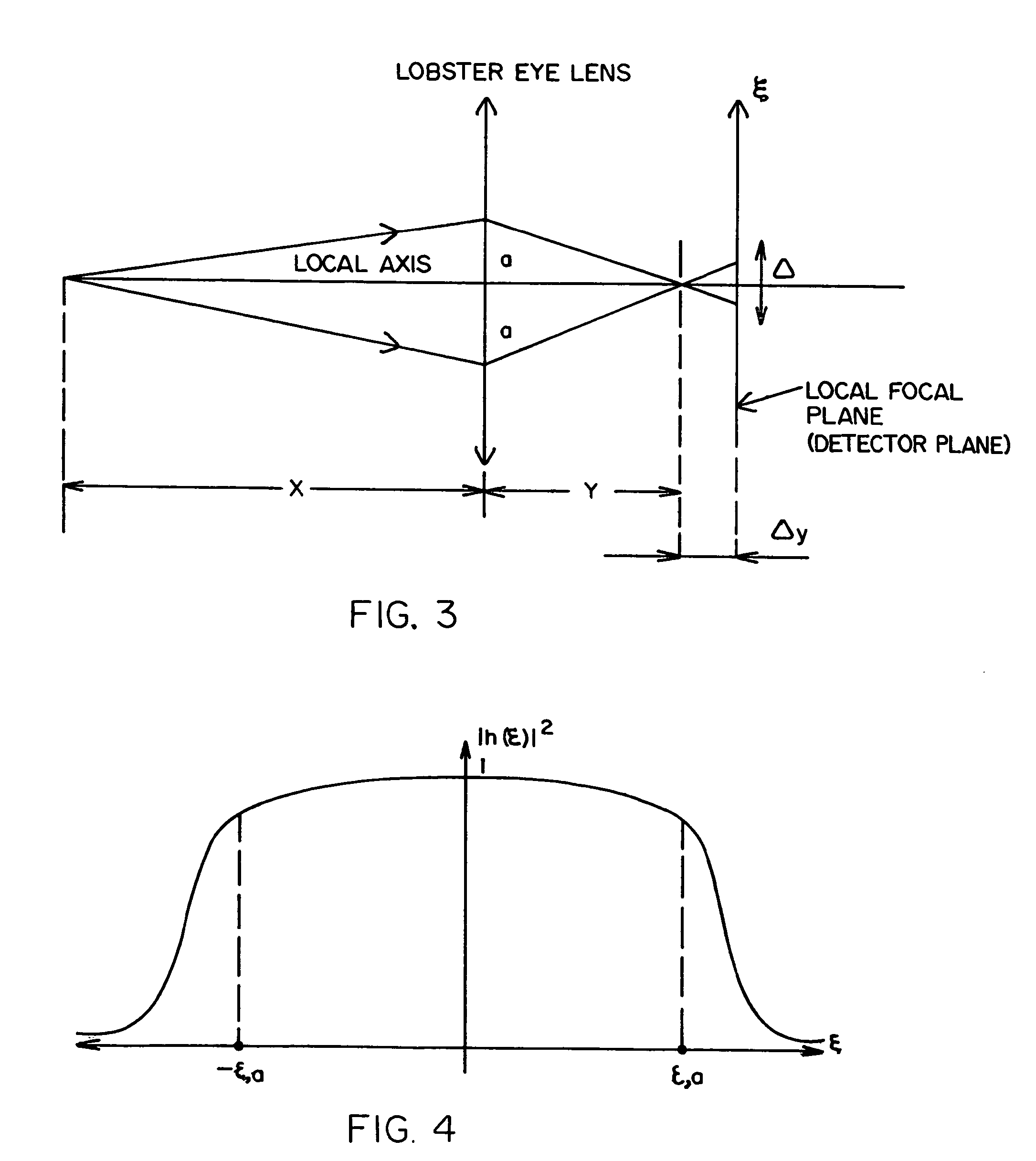Lobster eye X-ray imaging system and method of fabrication thereof
a x-ray imaging system and lobster eye technology, applied in the direction of material analysis using wave/particle radiation, instruments, diaphragm/collimeter handling, etc., can solve the problems of low signal-to-noise ratio, low signal-to-noise ratio, and inability to see hidden objects at the same temperature as the walls of optical thermal imaging systems, etc., to achieve optimized collection efficiency of lobster eye x-ray imaging system, reduce emitted x-ray power, and high signal-to-noi
- Summary
- Abstract
- Description
- Claims
- Application Information
AI Technical Summary
Benefits of technology
Problems solved by technology
Method used
Image
Examples
Embodiment Construction
Lobster Eye Imaging for Non-Astronomical Objects
[0060]Prior applications of the lobster eye lens have focused on astronomical objects; i.e., objects in infinity (x=∞). Then, spherical aberration dominates. In contrast, in the case of non-astronomical objects; i.e., objects in finite distances, comparable with lobster eye lens radius, R (x˜R), defocusing dominates, since the image region changes its location. To show this, consider the lobster eye lens geometry in FIG. 1. To derive lobster eye imaging equation, consider point source, D, its image, B, and curvature center, C. The local optical axis, DC, connects D with C. For continuum of objects points, we have a continuum of such axes, in contrast to the typical optical lens system that has only one axis. From triangle ABC, we have:
β=2γ+α (1)
and, from triangle DAC, we have
θc=α+γ (2)
where θc—cutoff angle of total external reflection (TER), that is, typically, in the range of 0.3°–0.5°. For such small TER-angles, Equation (1) can be...
PUM
| Property | Measurement | Unit |
|---|---|---|
| energy | aaaaa | aaaaa |
| thick | aaaaa | aaaaa |
| thick | aaaaa | aaaaa |
Abstract
Description
Claims
Application Information
 Login to View More
Login to View More - R&D
- Intellectual Property
- Life Sciences
- Materials
- Tech Scout
- Unparalleled Data Quality
- Higher Quality Content
- 60% Fewer Hallucinations
Browse by: Latest US Patents, China's latest patents, Technical Efficacy Thesaurus, Application Domain, Technology Topic, Popular Technical Reports.
© 2025 PatSnap. All rights reserved.Legal|Privacy policy|Modern Slavery Act Transparency Statement|Sitemap|About US| Contact US: help@patsnap.com



